Walking through the Great Estate, it should be no surprise to the casual visitor that Matilda Wilson loved gardening. Matilda’s passion for creating beautiful outdoor spaces is still thoroughly enjoyed by visitors and staff some 50 years after her death.
Her interest in gardening began in the early 1900s, during her first marriage when the responsibility of managing the newlyweds’ Meadow Brook Farms household also included the oversight of the formal landscape and the operations of the Meadow Brook Farms Greenhouse. With this responsibility, Matilda needed to quickly learn the fundamentals of horticulture. She learned the way many ladies of her day learned: from traveling, books, magazines, joining garden clubs and visiting each others’ gardens.
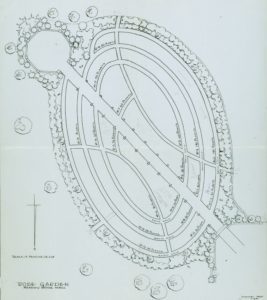
Although gardens of various shapes, sizes and styles were installed on the Meadow Brook Estate, what brought Matilda the most joy … and occasional frustration … were her roses, universally recognized as the queen of flowers.
When she and her second husband set out to build The Hall, Matilda charged Arthur Davidson, an English landscape designer, with the development of a master plan. She shared with him a short list of components to incorporate and at the top of that list was “Rose Garden”.
While Davidson designed a grand, sweeping plan of grand gardens for The Hall, his failing health and the stock market crash of 1929 prevented Alfred and Matilda Wilson from completing his grand vision. After the economy slowly began to improve in the late 1930s, Matilda turned her attention back to the landscape design.
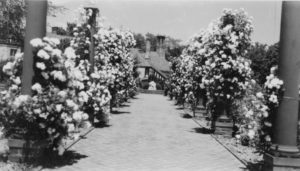
By this time, Matilda had hired experienced gardener Herman Siewert to oversee gardening operations on the estate. He became the top gardener on the estate and worked for Matilda for 38 years. The two worked closely on the gardens of the Great Estate. In the 1970s, he commented on the Rose Garden: “This is my history, out here with her.”
With Siewert on her side, Matilda then hired landscape architect Doan Ogden to finally design the long-anticipated Rose Garden. Ogden refined Davidson’s earlier design by adding a connecting garden, the Pegasus Garden. The layout offered a succession of interesting styles: the symmetry of the Breakfast Garden; the soothing hues of green and blue in the Pegasus Garden; and lastly, a step down into the Rose Garden, which offered a surprising burst of colorful blooms at varying heights.
The perimeter of the oval-shaped sunken garden enclosed the entire area with flowering s
hrubs, providing season-long color. Its center axis, a wide brick walk laid in a herringbone pattern, terminated at the octagonal Rose Tea Terrace, a private space used for entertaining. Lining both the center walk and the terrace were a series of columns with a trellis framework that supported climbing roses. When in full bloom, the entire arbor was a pillar of beauty, alternating colors of red, pink, white and yellow.
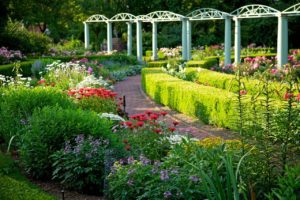
Designed slightly of-center, the number of beds totaled 18 and required some 1,800 roses to fill, including 40 different types of hybrid teas, grandifloras and floribundas. Because rose gardens are intended to be user-friendly for both display and cutting, most of the beds were designed to be no wider than three feet so one could easily reach each bloom.
From the start of the blooming season to its end, June through October, Matilda was known to walk through the Rose Garden almost daily. She left notes to to Siewert directing which roses she had selected to fill her vases, which were changed out frequently.
This article appears in a special Spring 2015 issue of Meadow Brook Magazine. The magazine publishes bi-annually and Meadow Brook Members receive it as part of their membership.
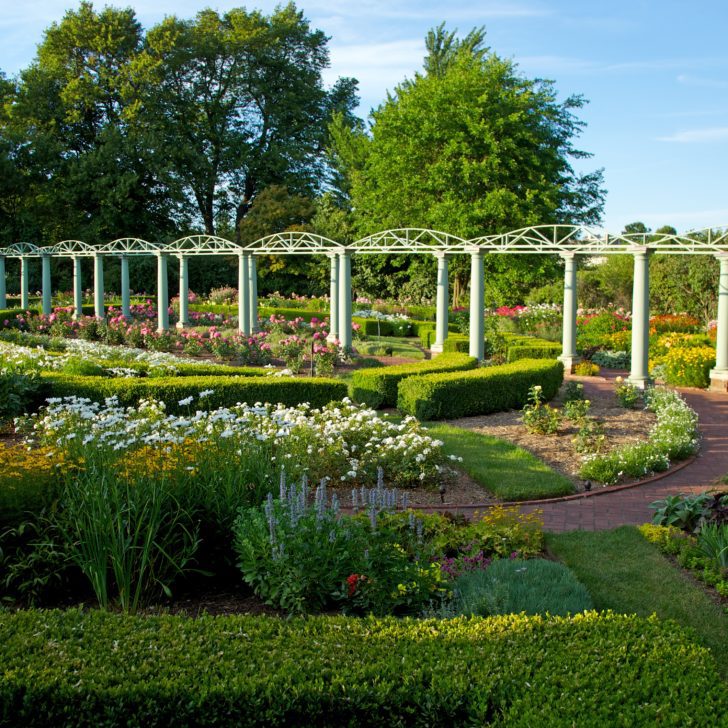
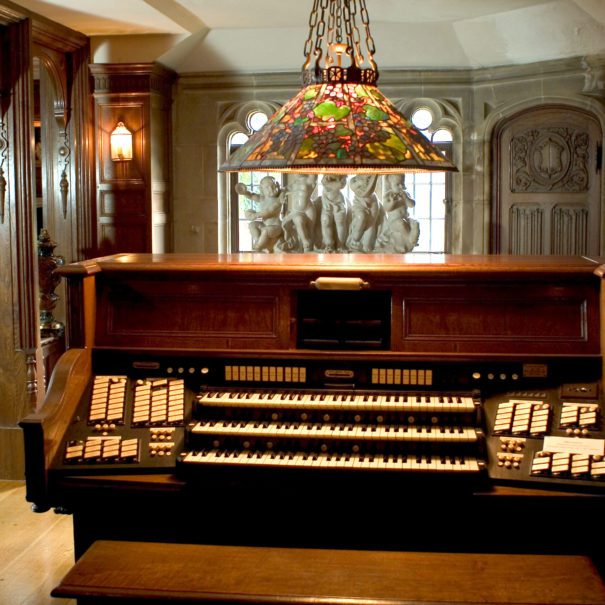
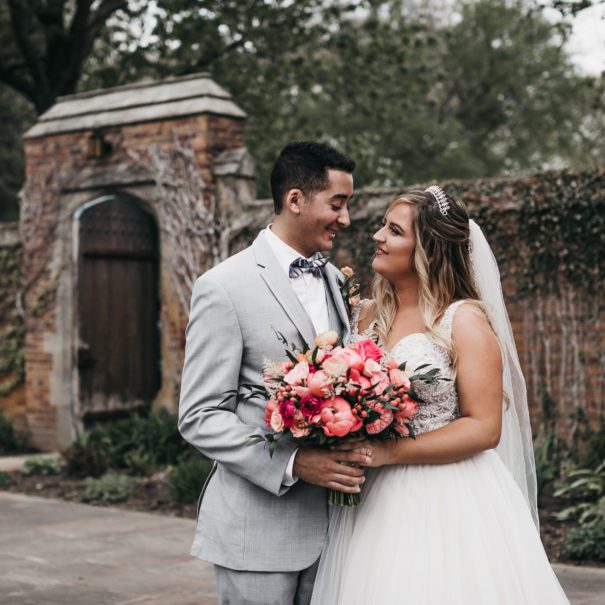
As a volunteer I love that we are learning things about Matilda and Meadowbrook all the time.